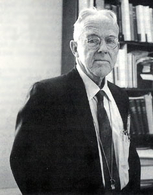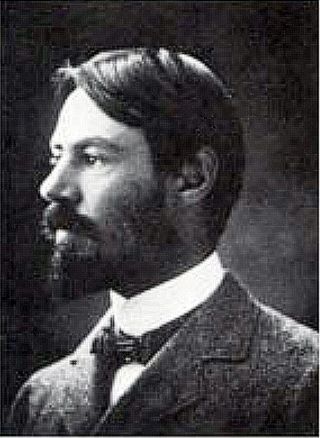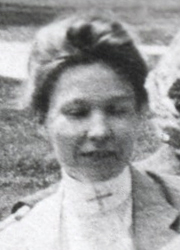Related Research Articles

Edward Palmer was a self-taught British botanist and an early American archaeologist.

Joseph Nelson Rose was an American botanist. He was born in Union County, Indiana. His father died serving during the Civil War when Joseph Rose was a young boy. He later graduated from high school in Liberty, Indiana.
Charles Vancouver Piper was an American botanist and agriculturalist. Born in Victoria, British Columbia, Canada, he spent his youth in Seattle, Washington Territory and graduated from the University of Washington Territory in 1885. He taught botany and zoology in 1892 at the Washington Agricultural College in Pullman. He earned a master's degree in botany in 1900 from Harvard University.

Albert Spear Hitchcock was an American botanist and agrostologist.

Lyman Bradford Smith was an American botanist.

Swallenia is a rare genus of plants in the grass family, found only in Death Valley National Park, California.

Frederick Vernon Coville was an American botanist who participated in the Death Valley Expedition (1890-1891), was honorary curator of the United States National Herbarium (1893-1937), worked at then was Chief botanist of the United States Department of Agriculture (USDA), and was the first director of the United States National Arboretum. He made contribution to economic botany and helped shape American scientific policy of the time on plant and exploration research.

George Vasey was an English-born American botanist who collected a lot in Illinois before integrating the United States Department of Agriculture (USDA), where he became Chief Botanist and curator of the greatly expanded National Herbarium.

Rogers McVaugh was a research professor of botany and the UNC Herbarium's curator of Mexican plants. He was also Adjunct Research Scientist of the Hunt Institute in Carnegie Mellon University and a Professor Emeritus of botany in the University of Michigan, Ann Arbor.

William Ashbrook Kellerman was an American botanist, mycologist and photographer.

Joseph Burtt Davy was a Quaker botanist and agrostologist. He was the first curator of the Forest Herbarium (FHO) at the Imperial Forestry Institute when it was founded in 1924 under the Directorship of Professor Robert Scott Troup.
Richard Eric Holttum was an English botanist and writer.

Mary Agnes Chase (1869–1963) was an American botanist who specialized in agrostology, the study of grasses. Although lacking formal education past elementary school, Chase was able to rise through the ranks as a botanist at the United States Department of Agriculture, beginning as an illustrator under the tutelage of Albert Spear Hitchcock, and eventually becoming a senior botanist, overseeing the USDA's Systematic Agrostology department. Chase conducted fieldwork abroad in Europe and South America and published several books, including the First Book of Grasses: The Structure of Grasses Explained for Beginners, which was later translated into Spanish and Portuguese. Additionally, Chase was recognized for her work as an agrostologist with numerous awards, including a Certificate of Merit issued by the Botanical Society of America in 1956. Chase was also an active suffragist and took part in demonstrations organized by the Silent Sentinels, a group established by members of the National Woman's Party. Although Chase's participation in this movement was not always well received by her peers in the scientific community, she nevertheless remained committed to the cause of women's suffrage.

Mark Alfred Carleton was an American botanist and plant pathologist, most notable for his introduction of hard red wheats and durum wheats from Russia into the American wheatbelt.
William Andrew Archer (1894–1973) was an American economic botanist, ethnobotanist, taxonomist, plant explorer, and herbarium curator. He was born in Torreon, Mexico to American parents. Archer studied at New Mexico State College, earning his B.S. in biology, and completed a Ph.D. in botany and mycology at the University of Michigan in 1925. Most of his professional career was spent at United States Department of Agriculture (USDA), including his position as Curator of the United States National Arboretum Herbarium from 1938 to 1964. After his retirement from the USDA, Archer was appointed Research Associate in the Department of Botany, National Museum of Natural History (NMNH). His career was marked by extensive collecting trips to Central and South America and to Africa. He spoke English, Portuguese and Spanish.

Nellie Adalesa Brown (1876–1956) was an American botanist and government researcher. Much of her research focused on plant pathology. While working with Charles Orrin Townsend and Agnes J. Quirk as assistants for Erwin Frink Smith, Brown and her colleagues described Agrobacterium tumefaciens, the organism responsible for crown gall in 1907. They also identified methods of mitigation.

Alice Crane Haskins Swingle (1880-1971) was an American government botanist. With her husband, botanist Deane Bret Swingle (1879–1944), she co-authored the 1928 book A Textbook of Systematic Botany.
Misael Acosta Solís was an Ecuadorian naturalist.
Frank Lamson-Scribner was an American botanist and pioneering plant pathologist. He was the first United States Department of Agriculture (USDA) scientist hired to study plant disease in economic plants and first USDA agrostologist.
William Albert Setchell was an American botanist and marine phycologist who taught at the University of California, Berkeley, where he headed the Botany Department. Among his publications are the Phycotheca Boreali-Americana, a multi-volume specimen collection of dried algae, and the Algae of Northwestern America, a reference work.